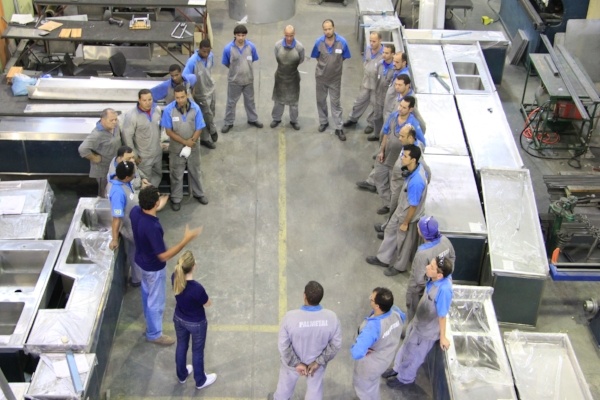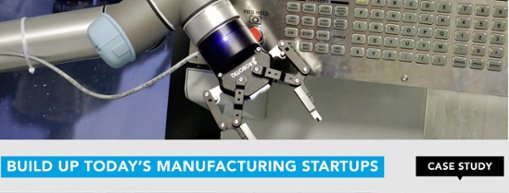3 Ways to Get Your Team on Board With Collaborative Robotics

Posted on Jun 05, 2017 7:00 AM. 2 min read time
When you announce that your manufacturing plant will be switching to collaborative robotics, there’s bound to be some discord amongst your team. After all, they’ll be wondering how it affects their jobs, if they’ll be pushed out by robotics, or a myriad of other concerns.
It’s at this crucial point that you should reassure and communicate with your team about all the ways this change will benefit not only the business, but them as well. Join us as we look at three ways to get your entire team on board with collaborative robotics.
3 Reasons Why Your Team Should Be Excited for Collaborative Robots

1. Increased Safety
Traditional fenced robots are known for being dangerous to their fellow coworkers, which is why they are placed in a fenced cell where they won’t come into contact with people. Thankfully, this is not the case with collaborative robots, otherwise known as cobots.
These types of robots are bound by a set of safety standards known as the ISO/TS 15066 state that collaborative robots must have at least one of four safety features:
● Safety-rated monitored stop - the ability to stop if a human enters the workspace. The robot’s movements must be under control at all times.
● Hand Guiding - The ability to put the robot into an anti-gravity or free-flowing mode that allows humans to use sensors on its hands and guide the cobot through the process of a task before allow it to begin working.
● Speed and Separation monitoring - the ability to adjust the robot’s speed based on where a human is located. Zones are defined showing how slow the robot will move based on distance before stopping if the human gets too close
● Power and force limitation - If contact with the robot occurs, the robot will limit its force to protect the person. Different technologies are used to achieve this such as force-torque sensors, compliant joints, or low-power actuators.
2. Eliminating Mundane Jobs
Another major benefit of collaborative robots, is their ability to take on mundane jobs that humans normally have to perform repetitively for hours at a time. Not only is this objectively boring, but it also can lead to work injuries like carpal tunnel.
By giving robots these boring tasks, humans can be utilized for more important and more pressing responsibilities that robots at their current stage won’t be able to perform. Furthermore, people can work alongside the robots to smoothly automate portions of their average workday.
3. Increased Accuracy
People make mistakes, and mistakes slow down production, which is bad for everyone. When a person is forced to do something constantly for long periods of time, there a larger room for error. On the other hand, a robot can accurately perform the same task for countless hours and never make a single mistake.
Experiments done by Axis New England have shown that Universal Robots themselves are more precise than 01 mm. They have been able to record a 0.01 mm repeatability in their experiments and have posted videos demonstrating this remarkable accuracy.
Final Thoughts
Collaborative robots are the future for manufacturing, but it’s a future that includes their human counterparts. Therefore, your team has nothing to fear from their presence. In fact, they will be safer, free to do more important work, and enjoy the benefits of increased accuracy.
How do you get your teams on board with these types of robots? Let us know in the comments!








Leave a comment